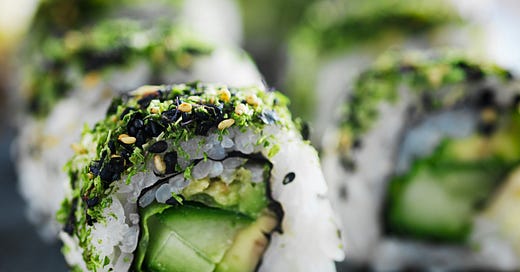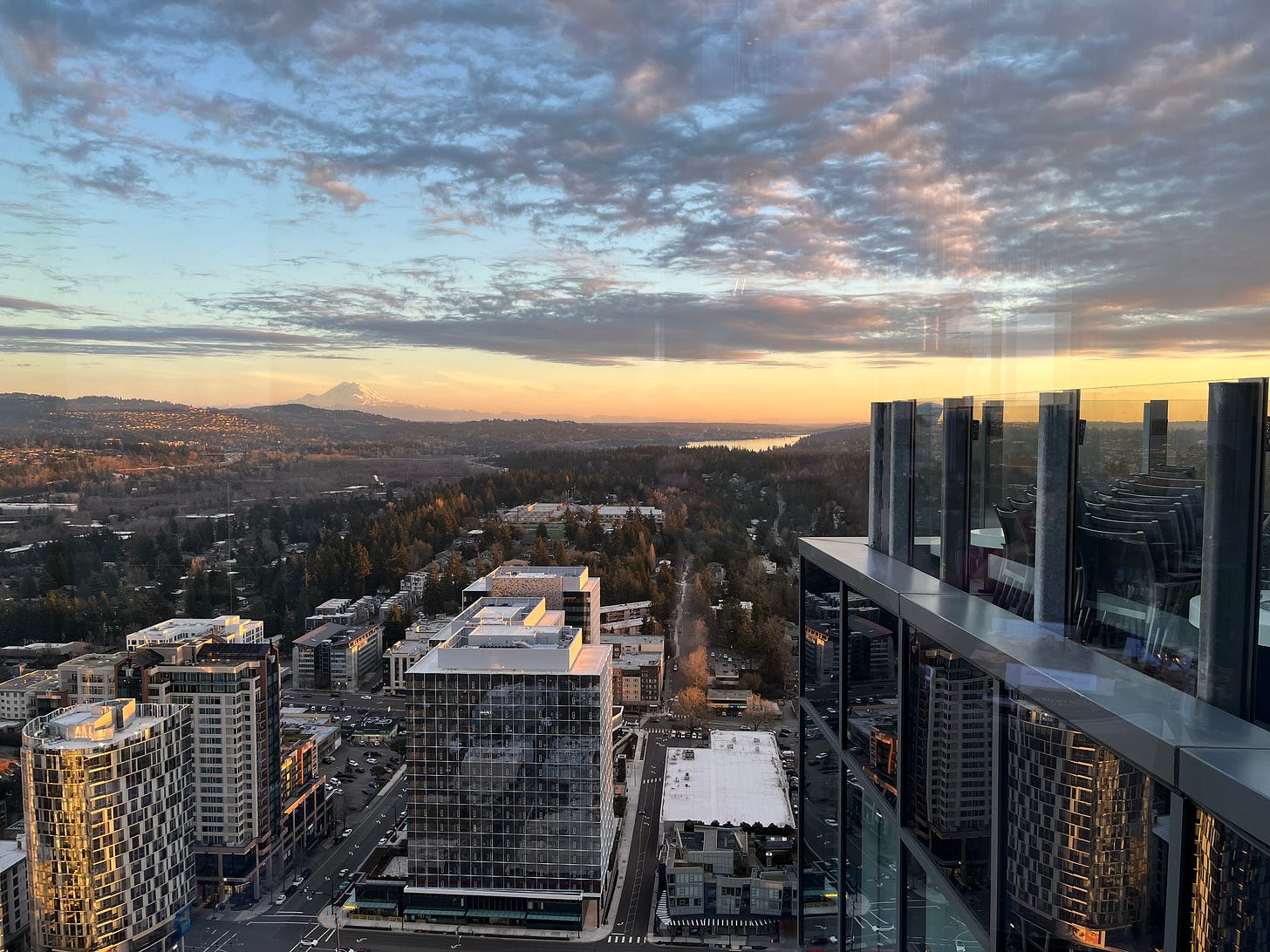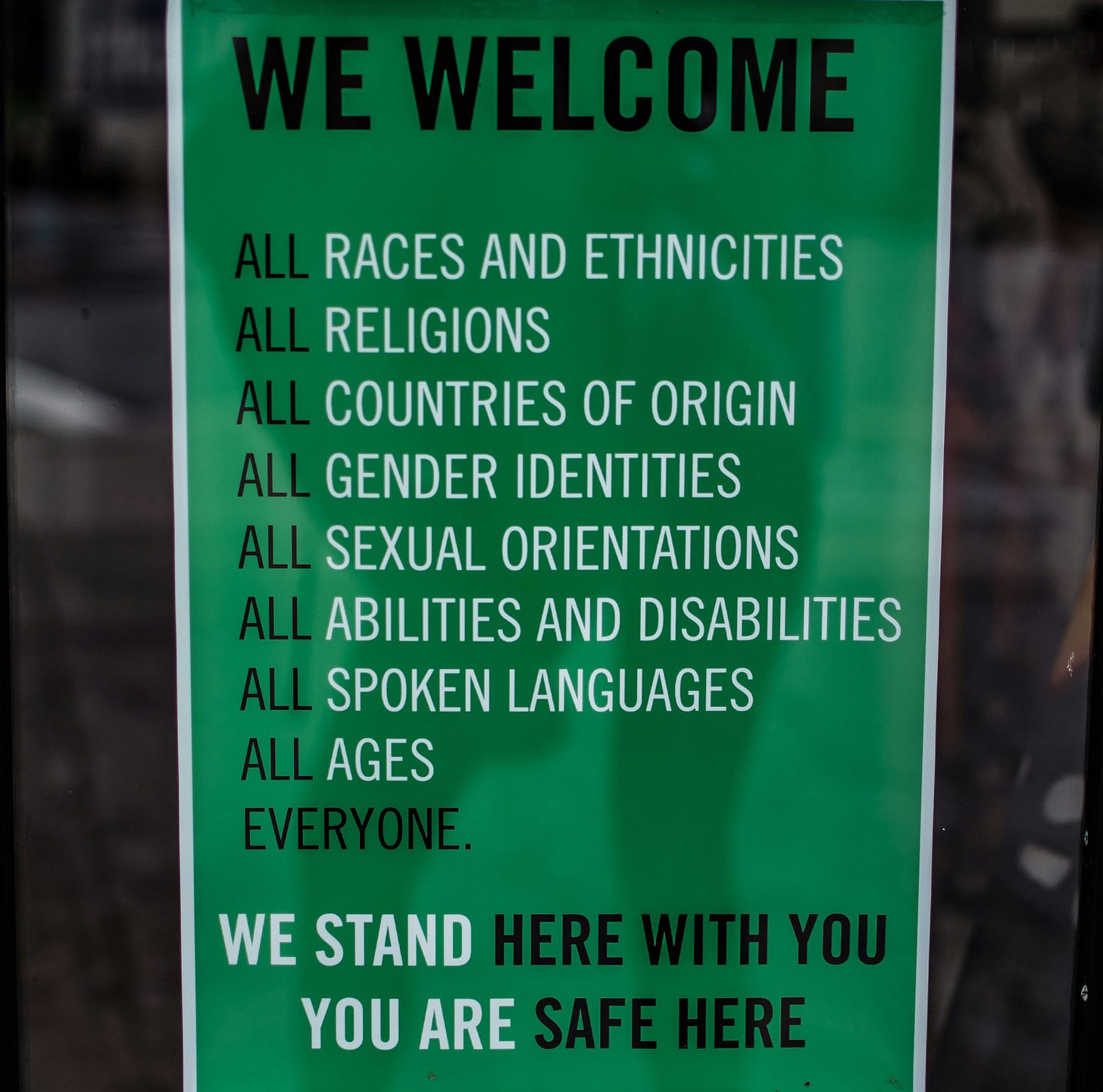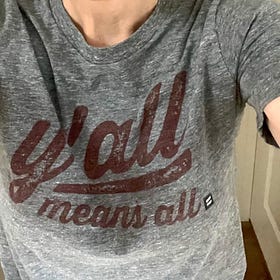Everyday Inclusion
Grand gestures are fine but everyday actions and (food) options matter most
It’s 4:30 p.m. on a weeknight and I’m sitting in bumper-to-bumper traffic, trying to leave the city for a work event across the lake. I sit through one light, then two. The traffic light turns green then red six times before I’m able to get through it.
I’m tempted to just turn around and head home, but I don’t. What GPS mapped as a 25 minute drive turns into an hour, maybe more, but I finally make it to the event—a storytelling workshop for business leaders.
Held at a fancy steak and sushi restaurant on the top floor of a downtown building with “spectacular views” of Lake Washington, this event was designed to impress.
It was the type of event where you network with other professionals while sipping white wine and munching on wagyu beef sliders, beautifully plated on mini compostable dishes that waitstaff clear from the table the second you put them down.
Sounds fantastic, right?
Unless you don’t drink … or are a vegan. That’s me, a non-drinking vegan.
Because I knew the event was being held at a steakhouse, my first instinct was to decline the invitation. But I didn’t. Instead, I emailed the host and said “I’d love to attend but will there be any vegan options?”
They assured me there would be and I enthusiastically RSVPed.
Fast forward to the event. Thanks to RTO traffic I arrived fashionably late and starving. I was delighted to find that they did, in fact, have vegan options—limited, but options nonetheless.
And then my host shared something interesting …
They hadn’t actually planned to have anything vegan on the menu until I sent my email. But thankfully I did because as it turned out, I was not the only vegetarian or vegan in attendance.
Oh yeah, and the avocado sushi roll ended up being my host’s favorite. Go figure. 🤷🏼♀️
Which sort of surprised me. Not the “vegan roll was my favorite” part … it was totally delicious. But I digress.
It surprised me because I live in Seattle, where vegetarianism and veganism aren’t all that uncommon. And, because this event was hosted by a company that prominently and proudly displays their commitment to diversity, equity, inclusion, and belonging on their website home page.
Inclusion isn’t hard, y’all.
Okay, maybe that’s a little glib. Creating inclusion can be hard … but it doesn’t need to be.
Now I’m not trying to throw shade at this company. They’re actually one of the good ones, with thoughtful leadership and wonderful people. Truly.
Sometimes companies and leaders get so caught up in the enormity of it all that they miss the forest for the trees—the little but incredibly impactful moments that matter most.
Thoughtfully-crafted statements and grand gestures are fine. Necessary, even. But they’re not sufficient. Inclusion is seen and felt most in the small everyday actions businesses and leaders take—like making sure that everyone has something to eat.
I’ve been to more than one work offsite where the lunchtime vegan option was an iceberg lettuce salad with oil and vinegar dressing. Not only is this belch (apologies if this is your most favorite food ever), it is also not calorically dense enough to sustain a human through an afternoon packed full with mind-numbingly dull incredibly insightful and engaging sessions.
I’ve learned to travel with protein bars because of this. But should I have to?
The next time you’re looking to foster inclusion at a team offsite or work event, start with these three simple steps:
Conduct social events during work hours. Not everyone can attend after-hours work events. Not everyone wants to attend them, either. Hold social events during work hours to ensure that everyone can attend and has equal access to the conversations, networking opportunities, and leadership visibility that often comes with these events.
Pay attention to holidays. When I was the CIO at Davidson College, our HR team published a calendar of the holidays for all major religions each semester to encourage faculty to plan major assignments and tests around these dates. We can and should do the same thing in our work environment so we don’t plan offsites during the Jewish high holidays, or team luncheons during Ramadan, for example.
Provide equal food and drink options. Folks eat and drink the way they do for a myriad of reasons that are none of our business. Your attendees shouldn’t have to out their personal information—or justify their decisions—just so they can eat at your event. Ensure there are not only options, but equal options—parity in food choices so you’re not serving most folks a five-course meal with wine while others are offered a side dish and water. (You may think this is an exaggeration but I assure you, it’s not.)
In the end, the event I attended was fantastic. The food was delicious, the people were delightful, and the content was interesting. I even learned a few things. 😉
When it comes to inclusion, learning is key. Even the most committed of us get it wrong sometimes. There’s always more we can learn and do to create an inclusive environment.
And occasionally that learning is sparked by a simple, emailed question.
Bonus read: One of the easiest things we can do to promote inclusion is to use inclusive language. Here’s one of my biggest language pet peeves:
164,000 Women Are Not "Guys"
A few weeks ago I—along with 164,000 other women—logged into Zoom to participate in the “White Women: Answer The Call! Show up for Kamala Harris” meeting. Kamala Harris had just announced her candidacy to become America’s first female president, and








Great post. With Ramadan just kicking off I hope a lot of folks are paying attention. Personally, I have never felt more seen as when, unprompted, folks remember I am gluten free and provide more than a bag of chips or a salad (you can pick off the croutons).